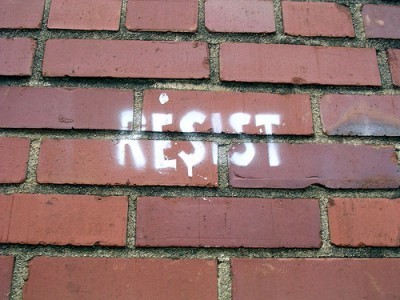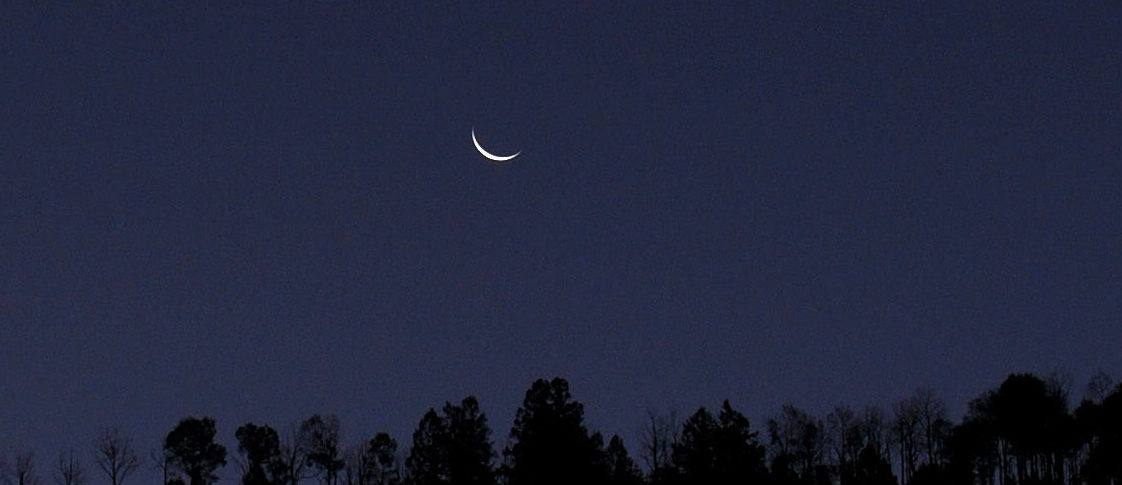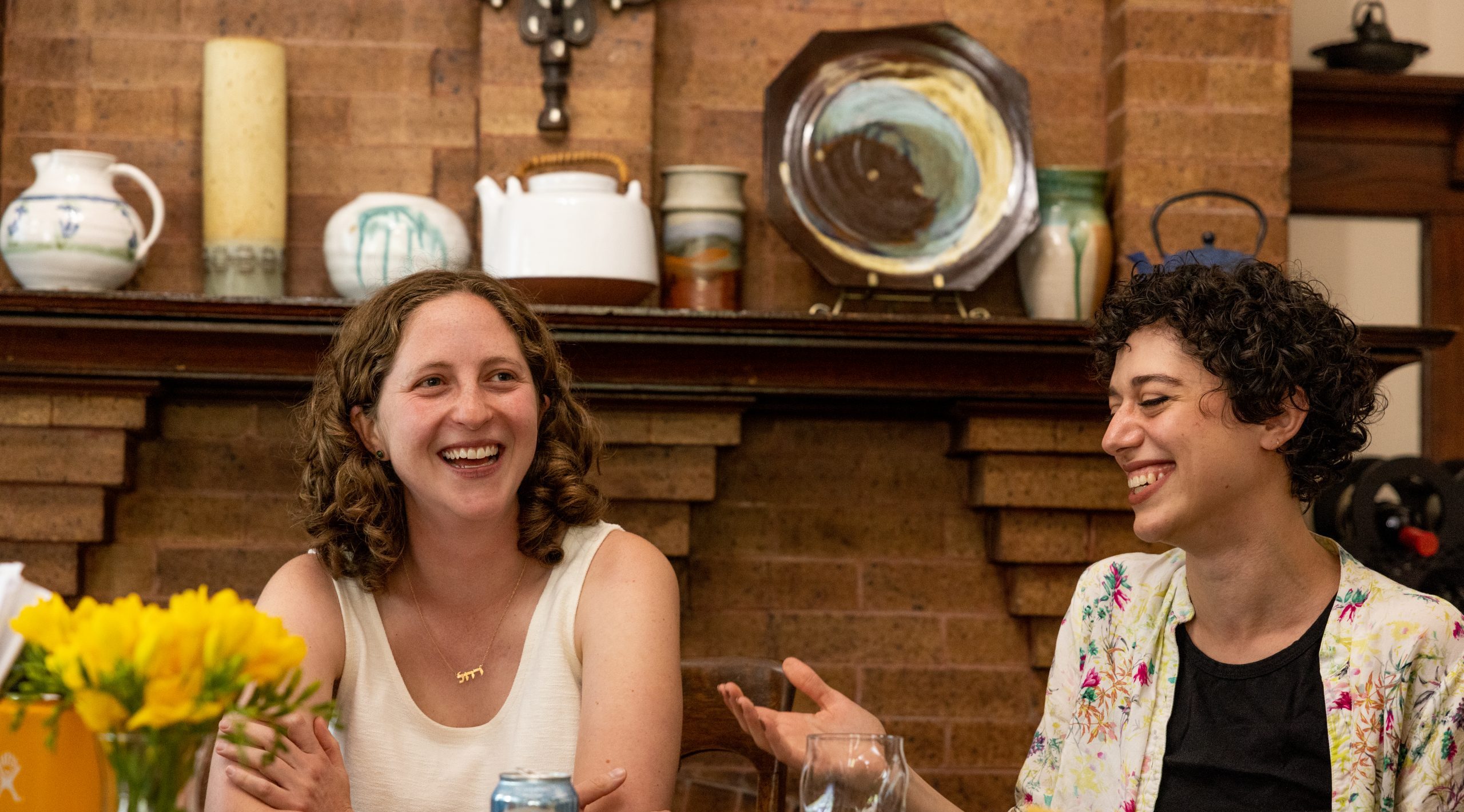
Jan 31, 2018 | by Rabbi Lisa Goldstein, Former Executive Director, Institute for Jewish Spirituality
 There are times when joy is an act of resistance.
There are times when joy is an act of resistance.
I have to remind myself of that occasionally. On these days when there is so little daylight, when the headlines are so dire, when my beloved home state of California has been engulfed in flames, joy can feel like an effort that is just too heavy.
Sometimes joy is characterized as wimpy or self-indulgent. It is seen as being something private or even selfish, with little or no bearing on the larger community. But part of what we come to know experientially through our practice is how interconnected things are. Through contemplatives practices I come to see how much my inner experience is shaped by the expectations and habits of the world around us and how I contribute in seen and unseen ways back into the expectations and habits of the world.
So when fear, greed or anger are dominant around me, I often experience those unpleasant emotions more readily. And when I experience these things – and even more so when I act upon them – I add more fear, greed or anger back into the system.
Alternatively, when joy, generosity or gratitude are dominant around us, I can experience those emotions more readily. When I act upon them, I can strengthen those middot in the larger culture. Our joy is so much more than our own small story. It is an expansive energy that reaches out with a light heart towards connection, forgiveness and possibilities. Real joy can be contagious and ripple outward.
That’s why joy can be an act of resistance. Cultivating a joyful heart can be a way of saying no to fear, greed and anger. It can defy the diminishing light, both real and figurative. It can clear away the space for an opening, for newness, for real delight.
In the Talmud, the House of Hillel disagreed with the House of Shammai as to why we light Hanukkah candles. Shammai’s version was more reliably grounded in the historical record, but Hillel’s argument was simple: Adding more light adds more holiness. My experience over Hanukkah showed that Hillel had it right. The growing light, night to night, lifted my heart. I felt my joy growing too from its hidden holy source. It is not so easily extinguished, after all. And that is a true blessing.
Photo Credit: Huffington Post
Oct 19, 2017 | by Rabbi Lisa Goldstein, Former Executive Director, Institute for Jewish Spirituality

The morning I wrote this greeting, I woke up very early. We had just concluded the final retreat for our second Clergy Leadership Program cohort and I was heading to the airport to return home for Shabbat. In the eastern sky there was the tiniest sliver of the crescent moon, just rising, heart-breakingly beautiful. It was just a few days before the month of Av began, with that same crescent moon setting in the west.
We are heading towards the end of the Three Weeks, the period between the 17th of Tammuz and the 9th of Av, the season of loss and horror in our mythic history. It is the season of siege, deprivation, enormous suffering, terrible destruction and there are many traditional customs of mourning that mark this season.
In fact, the one thing during this period that continues to be a beacon of joy is Shabbat. It is worth asking, if the world is burning around us, how can we celebrate Shabbat? Shouldn’t we be dedicating ourselves towards fixing this world that is experiencing so much horror? How can we take the time to dedicate to spiritual practice?
One answer to this question comes from a Netivot Shalom teaching about Noah’s Ark that we studied at our retreat. The metaphor is different, but the question is the same: When the flood waters rise up around us, threatening to drown us, how do we survive? What do we do?
The Netivot Shalom suggests that Noah’s ark, that temporary shelter, is actually a hint towards the practice of Shabbat. Shabbat, he teaches, is nothing less than the connection between the heavenly realms and the earthly realms; it is God’s dwelling place on earth. It is a pinah tehorah, a pure little place, where we can take refuge.
I think this offers three insights that are especially important during times of destruction, remembered or present. If Shabbat is the connection between heaven and earth, taking refuge in Shabbat is not about closing ourselves off from the world, but rather about gaining a greater perspective. It is often true that suffering causes our perspective to narrow, which makes it more difficult to make wise decisions. If our practice on Shabbat can help us open back up to the larger picture, we might know how to respond better when we return to facing the world.
Also, when we are closed up in the ark, buffeted by wind and rain, temporarily safe from the destruction around us, we realize that there is a limit to how well we can steer the boat. Parker Palmer teaches that “functional atheism,” acting as if everything depends on us, is a shadow side to leadership. Shabbat reminds us that yes, when havdalah is over, we must go back to acting. But the world depends on more than just our own efforts. Shabbat helps us cultivate this deeper trust.
And finally, Shabbat offers us the inspiration to go back out into the world once the flood waters subside, having experienced a glimpse of that pure little place that the world can be. By rooting us in joy and peace, community and spaciousness, we remind ourselves what we are working towards.
Wishing you a Shabbat shalom, a beacon of joy during this dark time in our spiritual calendar.

Dec 13, 2012 | by Rabbi Lisa Goldstein, Former Executive Director, Institute for Jewish Spirituality

As I walk through New York City these days, particularly in the evening, I am conscious of a desire to hold on to this magical time of year and not to let it pass. The city is filled with lights and decorations and people in beautiful clothes; the sidewalks are crowded with Christmas trees and holiday shoppers. It seems like everyone is heading out to a party and the darkness is warm and cozy, not cold and lonely. Wouldn’t it be great if it were like this all winter long until spring comes? And come to think of it, why stop just because the days are longer?
One could argue that the story of Chanukah is also about holding on. The second blessing reminds us of the miracles that were performed on our behalf at this time of year – this very same time of year. Now it’s just like it was back then! We want to remember the miracles and the deliverances, to keep the power of memory, to bring back traditions of our real or mythical ancestors – the specific latke technique, the Yiddish or Ladino melodies.
How profound, however, that the candles we use to make known the miracles are small, thin candles that go out in less than an hour! They are not like Shabbat candles that last through dinner or like yahrzeit candles that burn 24 hours. In fact, one of my family’s traditions is betting on which candle will go out last and watching intently as the flames flare and gutter and go out, releasing its twisting ribbon of smoke.
We know that everything passes – the candles, the holidays, the winter, life itself. Even the miracles come and go; the siddur reminds us that new miracles are constantly with us, morning, noon and night. The ephemeral candles remind us that light is beautiful, even when it’s fleeting – perhaps even because it is fleeting. They remind us that joy and gratitude in and of themselves are miracles of the spirit.
Wishing you and your loved ones a Chanukah filled with light and all kinds of miracles.
Sep 14, 2012 | by Rabbi Lisa Goldstein, Former Executive Director, Institute for Jewish Spirituality
Elul is coming to an end with the grandeur and mystery of the High Holy Days about to begin. In New York the weather shifted this week too; the sun is still warm, but the wind is fresh and even chilly, signs of colder days approaching.
Last week I mentioned the new building that is being constructed outside our windows. I have been watching the workers, climbing, moving and hammering, seemingly without a care, on the drop-off edge of a concrete slab 20 stories above the street. As I write, one man in a neon green vest is clinging to the outside of a plywood ladder, nothing underneath him but a net two floors below, whacking at something with a tool. He is clipped on with a harness, but from here, it looks pretty terrifying.
Fear. I remember studying once with Gabe Goldman, a naturalist and Jewish educator. He told of having led a hands-on workshop about how to handle very, very sharp knives, so sharp that you wouldn’t even feel it if you cut off your finger. He taught his students how to hold them, work with them, and respect them. He then followed the workshop with a lesson about yirah, “fearing” or being “in awe” of God.
After the sweet, mellow days of Elul, these High Holy Days, Days of Awe, give us a glimpse of something stronger and a little more fearful. They encourage us to consider the mystery of the unknown days ahead, days that may hold great blessings and great suffering, and probably a little of both. They give us the forum to come face to face with our limits and the reality of our mortality. They challenge us to confront our own vulnerability in the face of the colder days that are coming.
But, like the men outside who are building a new building, a structure that will provide shelter for hundreds of people and stand witness to their labors for many years, the High Holy Days also give us the opportunity to take satisfaction in the work of our hands and to find joy in living this life, in company with fellow travelers, step by dangerous step, even when we feel we are dangling over the abyss.
May 5773 bring all of us more blessings than suffering, more expansiveness than constriction, more peace than conflict, and more joy than sorrow. May our practices give us tools for wisdom, gratitude and compassion. And may we find good companions (or a good Companion) for the journey who can support us with courage, love and guidance.

 There are times when joy is an act of resistance.
There are times when joy is an act of resistance.



